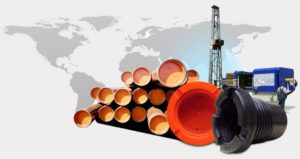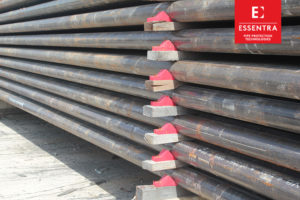Pipe thread protectors may be small, but they have a significant place in the oil and gas industries. These very versatile parts are used in a variety of settings, but the most common usage is on surface-handled drill string threads or during pipe storage and shipping. Gas and oil companies know that pipe protection can help them save time and money over recutting threads; therefore, working without thread protectors is simply unthinkable. The sections below contain information on the most vital applications for thread protection.
Thread Protectors Shield Pipe Drilling Process
The rugged conditions found on drilling sites can be tough on pipe, but custom thread protection parts cover pipe ends and shield them from the elements. Whenever pipes are stored, used, or moved, they stay protected.
Protecting Steel Casting Ends During Lifting
The gas and oil industries must find ways to protect steel casting ends, and thread protectors fulfill the need. These protectors are usually heat-treated, and they include heavy bails to facilitate the lifting and positioning of drill collars, pipe, and other BHA components. Protectors and pipe plugs are designed for precise, simple storage, and application.
Protecting Casings on Tool Joints
The casings on tool joints are vulnerable and should be protected from wear and tear. Smaller pipes and connecting components should be protected when out of use, and thread protection parts allow immediate storage or disassembly when it is time to move to a different part of the oilfield.
Protecting Important Oilfield Parts
As most know, oilfields are loud, dirty, and busy places. Custom thread protective parts offer much-needed strengthening to the ends of many standard parts, especially for those frequently moved and used for different purposes. With thread protectors, oilfield workers can store parts under a variety of environmental conditions.
Shielding Shop Parts from Harm
There are many reasons to use thread protection parts, plugs, and caps in the shop setting. Whenever a crucial piece of equipment must be stored while remaining ready for immediate use, pipe protection parts can handle the task.
Thread protectors from MSI
Plastic thread protection parts are commonly used in the gas and oil industries, as well as in other industrial settings. For specialized usage, steel protectors may be appropriate. Wherever protectors are used, the user can save a substantial amount of money and time.
For the best in high-quality custom thread protectors and other durable oilfield pipe protection products, connect with MSI today!




